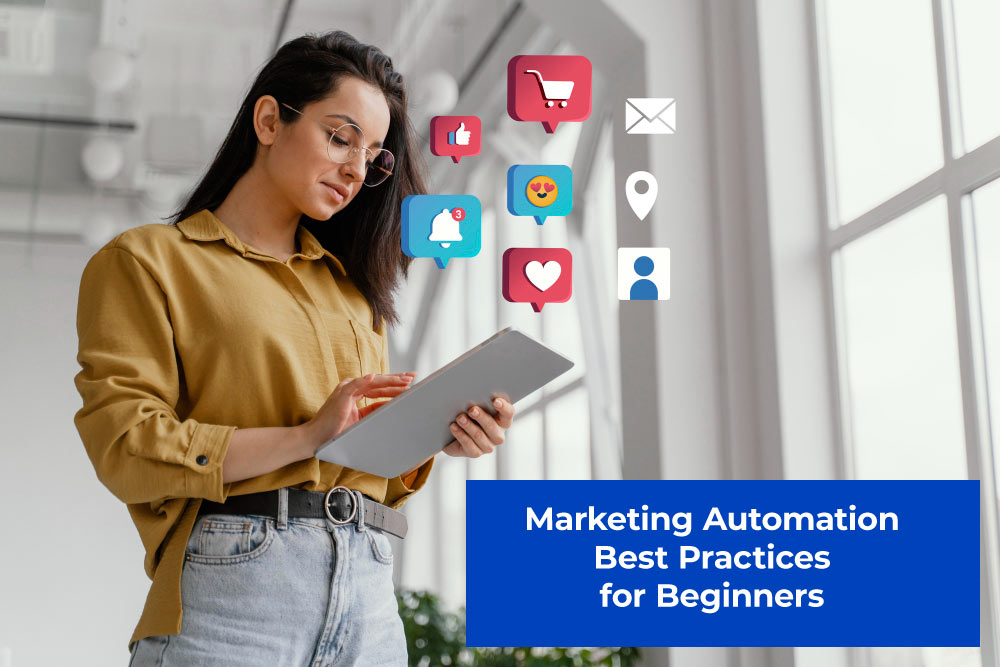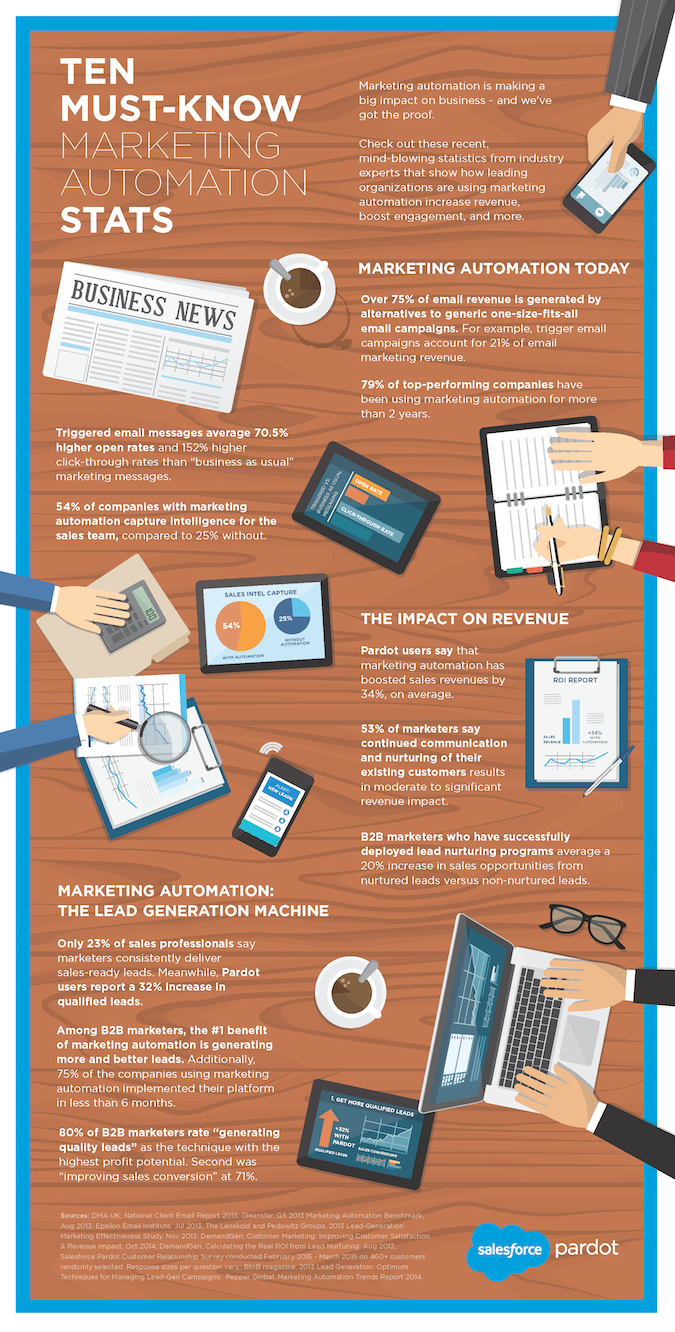
“Marketing automation” is a bit of a misnomer. There is no such thing as a truly “automated”, hands-off approach to internet marketing. Rather, marketing automation software is designed to semi-automate many aspects of a marketer’s day-to-day tasks and free up more time for an organization. For some businesses, marketing automation enables faster, easier email personalization, timely information dissemination, and lead nurturing. For other businesses, automation software is essential for processing, fulfilling, and tracking orders accurately and efficiently.
Choosing the Right Marketing Automation Platform
The first best practice of successful marketers is simply choosing the right platform for a particular organization. As of 2016, 49 percent of companies are using marketing software, while 98 percent of those who don’t currently have it are at least looking. Choosing a marketing automation platform is extremely difficult due to disparities in features and pricing structures that make comparing apples to apples nearly impossible. Beyond that, there are still dozens of companies jockeying for market share. Simply going with “the most popular” isn’t necessarily the best approach.
When you’re getting started with the shift to automated marketing, you’ll want to do a little soul-searching and ponder: “What are the most IMPORTANT aspects to automate in my business?” Other questions to ask include:
- – Where are you sinking a tremendous glut of time?
- – What tasks do you really dislike doing?
- – What channels are making you the most money?
- – Where do you need to see improvement?
Many business executives enlist the help of a digital marketing consultant to begin cutting through the chaos and mental clutter of getting started. A consultant will take a look at your existing business structure to identify areas of need. For instance:
- – Some companies benefit from a total organizational overhaul that involves Customer Relationship Management (CRM) software connected to lead nurturing campaigns.
- – Other companies may have a handle on their client/customer list, but could use a more powerful way to send out email promotions and newsletters, monitor social media conversations for selling opportunities, or create landing pages with e-commerce integration that will double as a search engine visibility booster.
- – Fledgling startups may be concerned with starting off on the right foot with everything automated that CAN be automated, and build their manual marketing processes from there.
Here are a few good places to start searching for solutions:
- – Hatchbuck – if you don’t need all the social media / analytics bells and whistles, but would like to run successful email drip campaigns, segment your audience better, and improve lead generation.
- – SharpSpring – if you expect amazing customer support and a robust platform that lets you track visitors — before you know their names — throughout the entire sales process, and you don’t mind paying a little more.
- – HubSpot – if you are interested in a popular option that is easy to use with a robust list of features from A/B testing and analytics, to responsive web design and lead management.
- – Wishpond – if you are on a shoestring budget, but need all-in-one automation for social media, lead management, email marketing and landing page creation.
- – Simply Cast – if you want a truly “bare bones”, $5/month way to manage social media a little better, create surveys and landing pages, and track campaign data.
- – InfusionSoft – if you have less than 5,000 contacts that you sell to; you only need basic analytics reports, email automation, easy landing page generation, and form creation; and you like the idea of mandatory training.
- – Oracle-Eloqua – if you want to go with one of the first all-in-one automation tools on the market, which offers over 100 third party integrations and is used by big companies like Sony, LinkedIn and American Express to manage complex campaigns.
- – Salesforce-Pardot – if you are an SMB looking to grow your business through real-time lead nurturing opportunities and lead scoring, sales lifecycle reporting, prospect tracking, and SEO.
- – Act-On – if you want a better way to track Key Performance Indicators, analyze the competition, and determine your marketing Return On Investment.

Top 3 Marketing Automation Best Practices
Once you’ve selected the right tool, you’ll undoubtedly be ready to recoup your investment. Here are three marketing automation best practices that will make you money quickly and easily:
1. Design a few new landing pages to segment your audience and set up targeted email drip campaigns.
Remember the last time you designed your website? It was probably a very big hassle and very big expense. Thankfully, you don’t need to design a whole new website to launch a new product, launch a specific promotion, target a new type of buyer, or drum up fresh leads.
Marketing automation software makes it quick, easy, and affordable to create web pages that appeal to very precise audiences. You can expect up to a 50 percent increase in conversions just by setting up landing pages with contact forms aimed at a particular segment of your buyers or a particular stage of the sales cycle. Once you get subscriber contact details, you can send series of auto-responder messages to move your prospects through the sales funnel by delivering the right information at the right time.
For instance, Mod Girl® client ROXY Plastic Surgery from Columbus, OH more than tripled their bookings in a month by initiating a series of emails going out to new prospects that explained more about the procedures people were interested in. Existing patients received a different series of emails about preparing for surgery and post-operative care, which significantly reduced the number of phone calls burdening the front end office, freeing up their time to do other tasks.
Watch the video to see how marketing automation helps improve Dr. Grawe’s patient retention.
2. Track and tweak your marketing efforts.
You can use your marketing automation program to complete valuable tracking activities, such as:
- Identifying open, click and bounce rates for emails, as well as tracking visitor movements around your webpage – which enables you to improve the user experience, fix areas that lose you money and build on your successes.
- Studying a prospect’s recent activity history to know what other pages they’ve visited, content they’ve downloaded, or purchases they’ve made – which will let you know where content opportunities exist.
- Receiving alerts when prospects visit a targeted page (like pricing) or perform a desired action (like download content) – which will let you know when to deliver next-level communications or pass the contact along to sales
- Examining a complete record of pre-conversation engagements for new visitors – which will help you understand what path a buyer takes, so you can connect with future newcomers to your site.
Tweaking a few subtle elements of your web design, language, or focus can translate to big money. A/B testing lets you create two versions of the same display ad, landing page, email, or marketing video. Alternating versions will be shown to visitors, with bounce rate, time spent viewing, and conversions tested for efficiency. The best marketers test everything – subject lines, email content, times of day communications are sent. In as little as a month, clear patterns will begin to emerge to cut down on marketing waste and bring home better results.
3. Strengthen internal communications and improve collaboration between marketing and sales.
One of the biggest impediments to effective business growth is stagnation between marketing and sales. The marketing department heads complain: “All those sales guys care about is the bottom line and the numbers.” The sales department complains: “Those marketers are too pie-in-the-sky about their spending and send us garbage leads we can’t close on.”
Marketing automation really bridges the gap for organizations that struggle to unite both factions. The reporting feature makes it easy for marketers to digest the data and start speaking the sales department’s language. Breakdowns like cost-per-lead and cost-per-opportunity are easy to follow. All customer behavior data can be centralized, so both parties have access to the same information. Prospects can be flagged for follow-up with the sales team based on a set of previously agreed-upon criteria. Hopefully, the end result is improved alignment and growth upwards of 32 percent a year.
Need Help Choosing a Marketing Automation Platform?
By choosing the right platform and following these marketing automation best practices, you CAN create a highly efficient organization that makes money. Click here to contact me if you need assistance choosing a marketing automation provider.



Very helpgul insights,information and current ,on top of the everchanging social media platforms! Thanks for including me@
Glad you liked it, Cynthia!